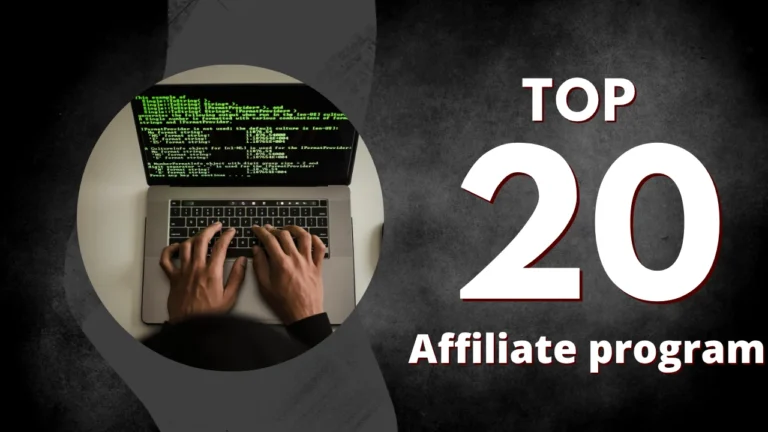Affiliate Marketing If you’re a beginner looking to start affiliate marketing in 2025, having a solid checklist is essential to avoid confusion, save time, and launch efficiently. This comprehensive affiliate marketing checklist is designed specifically for beginners who want to get started with minimal investment and scale up effectively. From choosing the right niche to selecting essential tools and setting a realistic budget, this guide will help you take your first steps with clarity and confidence.

Define Your Affiliate Marketing Goals
Before spending any money or building websites, define what you want to achieve with affiliate marketing:
- Earn passive income
- Promote products you believe in
- Build an audience and personal brand
- Create a long-term online business
Clear goals help shape your strategy and focus your energy on what matters most.
Choose a Profitable Niche (For Beginners)
Picking a niche is one of the most critical parts of your affiliate journey. For beginners, it’s best to choose something you’re passionate about or have basic knowledge in.
Beginner-Friendly Niches:
- Health & Wellness
- Personal Finance
- Fitness & Weight Loss
- Technology & Gadgets
- Digital Marketing Tools
Tips:
- Check search demand using free tools like Google Keyword Planner or Ubersuggest.
- Validate affiliate offers within the niche on platforms like Digistore24, ClickBank, or Impact.
Join Beginner-Friendly Affiliate Programs
Your affiliate success depends heavily on the quality of the affiliate programs you join. Focus on programs with easy approval, transparent payouts, and good support.
Top Beginner Affiliate Programs for 2025:
- Amazon Associates – Low commission but vast product range
- Systeme.io – Offers a free plan and 40% recurring commission
- Digistore24 – Digital products, instant approval, high commissions
- ShareASale – Access to hundreds of beginner-friendly offers
- ClickBank – High-paying offers and no approval required
Look for programs that align with your niche and content style.
Set a Starter Budget for Affiliate Marketing
Affiliate marketing can be started with almost no budget, but investing in a few essentials will boost your chances of success.
Budget Options:
- Free Plan: Use free tools like Systeme.io, Canva, and Blogger
- Low Budget ($50–$100): Domain, hosting, and email software
- Mid Budget ($200–$500): Paid tools + ad testing
What to Prioritize:
- Domain & Hosting (~$50/year)
- Funnel builder (Systeme.io – free or premium)
- Email marketing software (free tiers: MailerLite, GetResponse)
Essential Tools You Need to Get Started
To streamline your affiliate marketing setup, these tools are highly recommended:
| Tool Type | Recommended Tools | Cost |
|---|---|---|
| Website/Funnel Builder | Systeme.io, WordPress | Free–$27/mo |
| Email Marketing | MailerLite, GetResponse | Free–$15/mo |
| Graphics | Canva | Free–$12/mo |
| Keyword Research | Ubersuggest, Google Planner | Free |
| Link Tracking | Bit.ly, Systeme.io | Free |
Start with free tools and upgrade as your revenue grows.
Build a Simple Website or Funnel
A website or landing page is your digital home. It’s where people learn about your offers and sign up for your list.
Beginners Should:
- Use Systeme.io for simple funnel creation (drag-and-drop)
- Use WordPress with a free or low-cost theme
Add these pages:
- Home / Landing Page
- Affiliate Disclaimer
- Contact Page
- Blog or Offer Page
Create Your First Content Plan
Content is the engine that drives affiliate sales. Choose a format you’re comfortable with:
- Blog posts
- YouTube videos
- Short-form social media content (Instagram, TikTok)
Content Strategy for Beginners:
- Answer questions your audience is searching for
- Use free keyword tools to find search volume
- Include affiliate links naturally
Pro Tip: Focus on value. Solve a problem before you promote a product.
Traffic Strategy: Free & Paid
Without traffic, even the best affiliate funnel won’t work.
Free Traffic Sources:
- SEO-focused blog posts
- YouTube content
- Pinterest or Instagram
Paid Traffic (Low Budget):
- Facebook Ads (~$5–$10/day)
- Google Ads for high-converting keywords
- Solo ads (for email list building)
Test both options and double down on what brings conversions.
Set Up Email Marketing
Email marketing is a critical long-term asset. It allows you to:
- Build trust with your audience
- Promote offers consistently
- Earn recurring income
Steps:
- Create a free lead magnet (e.g., checklist, ebook)
- Set up an autoresponder sequence
- Send weekly content + promotional emails
Use tools like GetResponse, MailerLite, or Systeme.io.
Track Results with Basic Analytics
Tracking your performance helps you learn what works and what doesn’t.
Track:
- Click-through rates (CTR)
- Conversion rates
- Traffic sources
- Sales per offer
Use free tools like Google Analytics, Bit.ly, and your affiliate dashboard.
Avoid Common Beginner Mistakes
Stay clear of these common traps:
- Promoting too many products
- Not focusing on one niche
- Giving up too early
- Ignoring email marketing
- Not disclosing affiliate links
Affiliate marketing takes time — consistency is key.
Legal & Compliance Requirements
Stay compliant by:
- Adding an affiliate disclaimer to your site
- Including terms and privacy policy
- Following platform-specific rules (FTC, GDPR)
Use free templates or website plugins to stay covered.
Scaling Up After 3 Months
Once you’re generating consistent traffic and sales:
- Invest in paid ads or better tools
- Create a second funnel
- Build your personal brand
- Consider high-ticket affiliate programs
This is how you go from $100/month to $1,000/month and beyond.
Join Communities and Learn from Others
Learning from others speeds up your growth. Join:
- Facebook groups for affiliate beginners
- Reddit forums like r/affiliatemarketing
- Paid communities or mastermind groups
These spaces offer accountability and up-to-date strategies.
Affiliate Marketing Checklist Summary Table
| Step | Task | Tools Needed |
| Set Goals | Define income + niche direction | Notepad/Google Docs |
| Choose Niche | Pick something profitable + focused | Google Trends, Forums |
| Join Affiliate Programs | Apply to 2–3 beginner programs | Digistore24, Systeme.io |
| Budget Setup | Allocate budget to key tools | PayPal, Spreadsheet |
| Build Website/Funnel | Create online presence | Systeme.io, WordPress |
| Content Plan | Choose blog/video/social | Google Sheets, Canva |
| Drive Traffic | Use SEO + Paid ads | Google Ads, Meta Ads |
| Email Setup | Build list and autoresponders | GetResponse, MailerLite |
| Track & Optimize | Monitor performance weekly | Bit.ly, Google Analytics |
| Scale Up | Reinvest profits strategically | Advanced tools/courses |
Conclusion
Starting affiliate marketing in 2025 as a beginner can be simple and affordable if you follow the right checklist. By setting clear goals, picking the right niche, joining beginner-friendly affiliate programs, and using free or low-cost tools, you’ll build a foundation that can scale over time.
Focus on creating value, building trust, and learning continuously. Stick to this affiliate marketing checklist and you’ll be on your way to your first commissions — and eventually long-term success.
Ready to begin? Start by joining a beginner-friendly affiliate program like Systeme.io or Digistore24 and start building your affiliate journey today.
Related Posts:
- Top Beginner Affiliate Programs with Instant Approval
- How to Start Affiliate Marketing Without a Website
- Systeme.io Review: Best Free Tool for Affiliate Marketing






